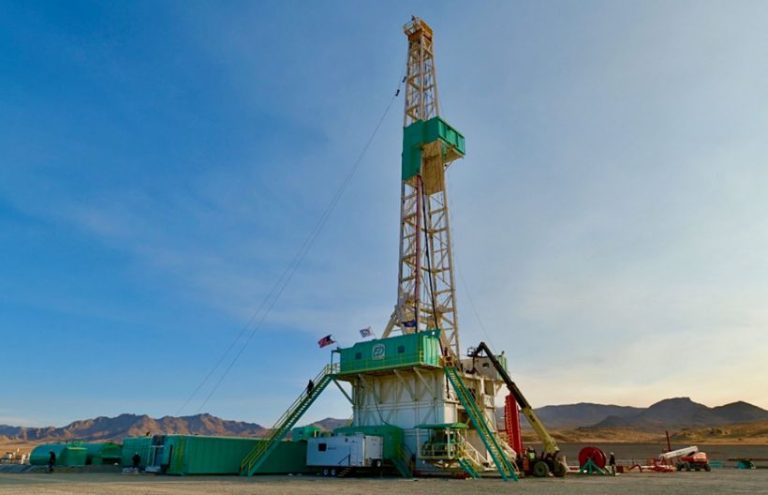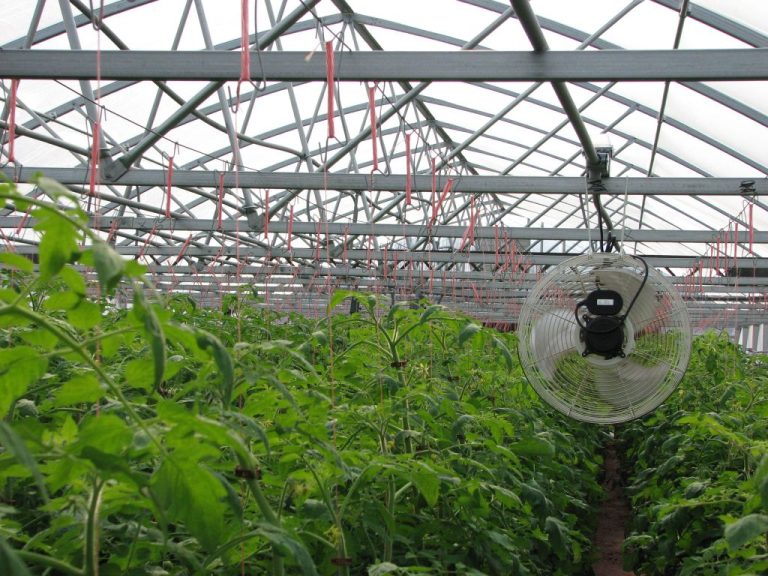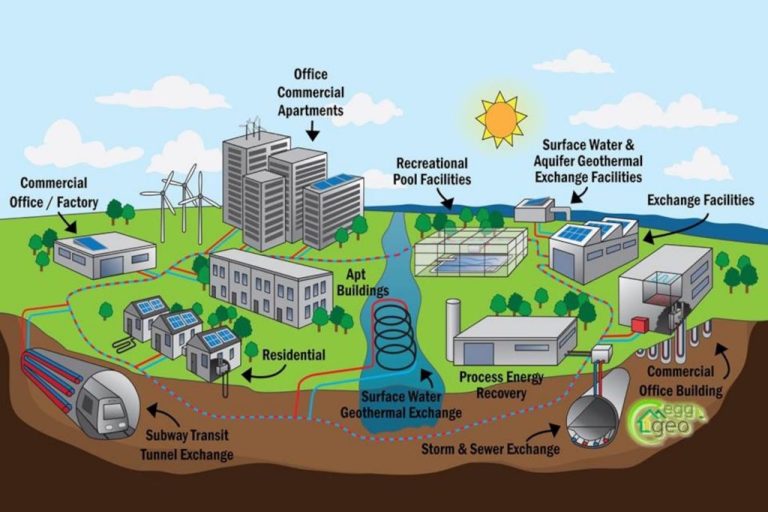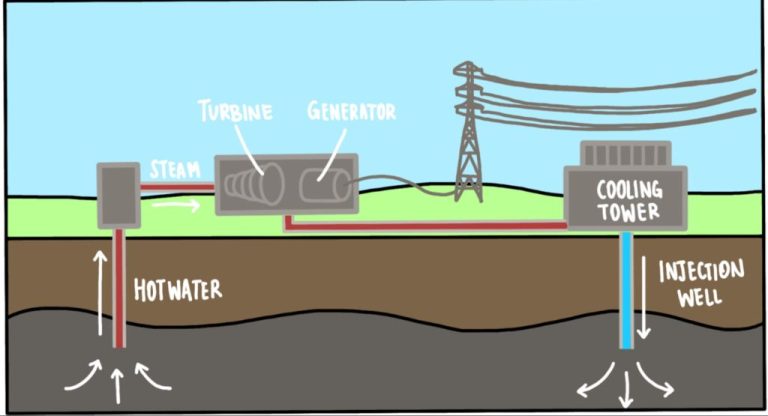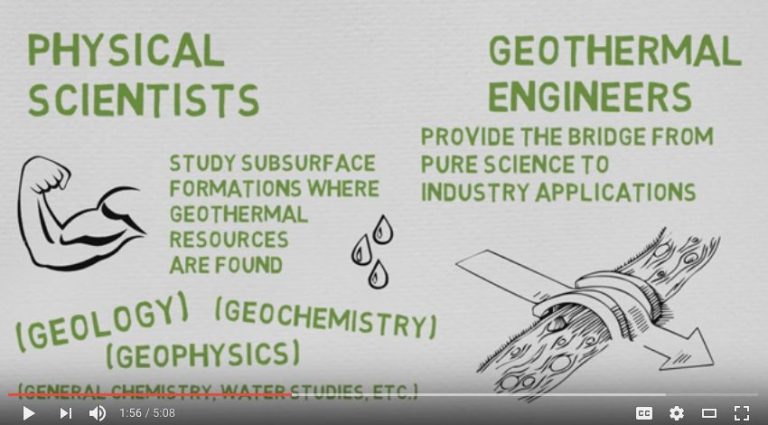What Type Of Energy Is Produced From Magma?
Magma is molten material that forms deep below the Earth’s surface. It is generated when intense heat from the mantle causes solid rock to melt. Magma occurs in the mantle and crust of the planet. As the molten rock works its way to the surface, it collects in magma chambers that feed volcanoes and other igneous formations. The temperature of magma usually ranges from 1300 to 2400 degrees Fahrenheit (700 to 1300 degrees Celsius). This extreme heat allows the material to remain in liquid form underground. Magma is less dense than the surrounding solid rock, so it tends to rise upwards when mobilized. The movement and crystallization of magma drives plate tectonics and powers volcanic eruptions. In summary, magma originates from the intense heat found deep within the Earth and contains the potential energy to dramatically transform the planet’s surface.
Geothermal Energy
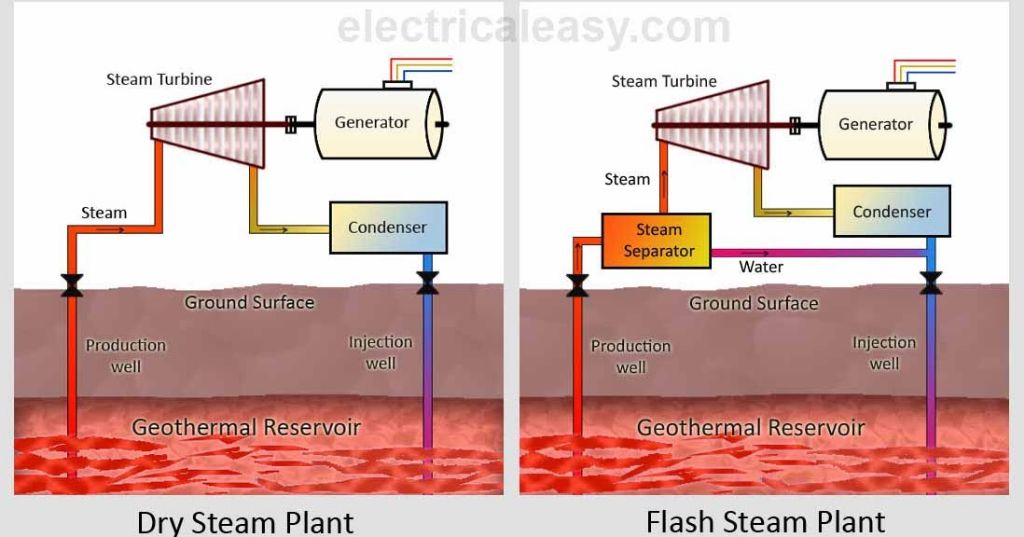
Geothermal energy is a renewable energy source that utilizes heat from the Earth’s interior to generate electricity and provide heating and cooling (The Conversation, 2016). The high temperatures required for geothermal power generation come from areas where magma, or molten rock from the Earth’s core, exists in cracks and fractures in the Earth’s crust (Phys.org, 2011). As the magma rises towards the surface, it heats underground pockets of water. This heated water sometimes emerges naturally at the surface as hot springs or geysers. Geothermal power plants are built around these areas where hot magma comes close enough to the surface to produce high temperatures underground. Wells are drilled down into the hot water reservoirs to bring the heated water to the surface as steam. The steam then turns turbines on generators that produce electricity. After driving the turbine, the steam cools and condenses back into water, which is then pumped back into the reservoir to repeat the process. In this way, magma provides the high temperatures required to continuously heat underground water into steam for geothermal power generation.
Volcanic Eruptions
Volcanic eruptions occur when hot magma from deep within the Earth rises through cracks or weaknesses in the crust and erupts onto the surface as lava. According to the U.S. Geological Survey, the molten rock (magma) that drives volcanic eruptions can provide heat for electricity generation. As magma rises to the surface during an eruption, it brings with it tremendous thermal energy in the form of heat. When this hot magma reaches the Earth’s surface, it erupts as lava at temperatures of 700°C to 1,200°C. This release of heat energy at the surface is what makes volcanoes such a powerful display of geothermal energy.
For example, the U.S. Geological Survey notes that geothermal power plants in California harness leftover heat from volcanoes that erupted millions of years ago. As hot magma reaches the surface during an eruption, it provides a massive release of thermal energy that can be tapped as a renewable energy source long after the eruption ends.
Movement of Tectonic Plates
The earth’s outer layer is divided into several rigid tectonic plates that are constantly in motion relative to each other. Their movement occurs at plate boundaries and is driven by convection currents in the mantle, the layer beneath the crust (Phys.org, 2020). As the mantle material heats up, it rises, moves laterally, and then sinks again, setting the plates in motion.
Scientists have recently discovered that a small amount of molten rock or magma located under tectonic plates also encourages their movement. According to research published by CNRS, this deep magma lubricates the boundary between the crust and mantle, facilitating the shifting of tectonic plates. The melting of rocks at plate boundaries makes them deform more easily, enabling the plates to slide past or collide with each other more readily.
The movement of tectonic plates causes earthquakes, volcanic eruptions, and the formation of mountains. So in effect, the presence of deep magma indirectly contributes to these geological activities by promoting plate motion (CNRS, 2020). Understanding this role of magma provides new insights into plate tectonics and associated hazards.
Magma Composition
The chemical composition of magma is one of the most important factors that determine its physical properties. Magma consists of molten rock, volatiles such as water vapor, carbon dioxide and sulfur dioxide, and suspended crystals. The relative amounts of silica (SiO2), iron, magnesium and other elements in the molten rock give magma different compositions. The major types of magma are basaltic, andesitic, dacitic, and rhyolitic, in order of increasing silica content (Australian Museum, 2023).
Basaltic magmas are the hottest and have a low viscosity, allowing them to flow easily. They commonly erupt from shield volcanoes in effusive eruptions. Andesitic magmas have an intermediate composition and are slightly cooler and more viscous than basalt. Dacitic magma is sticky and viscous with a high silica content. It often forms thick lava domes. Rhyolitic magma has an extremely high silica content, is very viscous, and can erupt violently in explosive eruptions (Tulane University, 2015).
The gases dissolved in magma also significantly affect its properties. Water vapor decreases viscosity and increases explosiveness. Carbon dioxide and sulfur dioxide make magma more fluid and lower its melting point. Chlorine, fluorine and other volatiles contribute to magma’s hazards in eruptions (Britannica, 2024). The unique composition of each magma body determines its distinct physical characteristics and eruptive styles.
Melting Process
The melting of rocks into magma is primarily driven by changes in temperature and pressure [1]. As rocks at depth in the Earth’s crust and mantle experience increasing temperatures, they begin to melt and form magma. Higher temperatures reduce the viscosity of rocks, making it easier for them to melt and flow. In addition, decreasing pressure on rocks lowers their melting point, causing partial melting. For example, as tectonic plates move and rocks shift upwards, the pressure on them decreases and they can start to melt at lower temperatures [2]. The changes in temperature and pressure induce melting by disrupting the crystalline structure of solid rocks.
Magma vs Lava
Magma is molten rock located under Earth’s surface. Lava forms when magma reaches the surface through a volcano or fissures in the crust. According to the US Geological Survey, “Scientists use the term magma for molten rock that is underground and lava for molten rock that breaks through the Earth’s surface.”
The main difference between magma and lava is their location. Magma is underground, while lava flows on the surface. Once magma erupts from a volcano and begins moving on the surface, it is called lava. So magma only transforms into lava when it is erupted onto Earth’s surface.
Magma Temperature
Magma underground can reach extremely high temperatures, usually ranging from about 700 to 1,300 degrees Celsius (1,300 to 2,400 degrees Fahrenheit) according to How hot is magma? (https://homework.study.com/explanation/how-hot-is-magma.html). The exact temperature depends on the composition and location of the magma. For example, the magma that erupts from volcanoes is usually cooler, around 700 to 1,200 degrees Celsius (1,300 to 2,200 degrees Fahrenheit). However, Just How Hot is Magma in the Earth? (https://a-z-animals.com/blog/just-how-hot-is-magma-in-the-earth/) explains that magma formed directly over a hotspot in the mantle can reach over 1,600 degrees Celsius (3,000 degrees Fahrenheit). So while magma temperatures vary, typical underground magma is extremely hot, reaching over 1,000 degrees Celsius.
Magma Hazards
Magma poses many dangers when it erupts from a volcano. The high temperatures and pressures within magma can lead to explosive volcanic eruptions that blast rocky debris and hot ash flows into the surrounding areas (Volcanic hazards). These eruptions can threaten human life, destroy property, and severely damage ecosystems.
Lava flows are streams of molten rock that pour downslope from an erupting vent (What kinds of hazards are associated with volcanic). They destroy everything in their path but tend to move slowly enough for people to evacuate. However, lava flows can release harmful gases, start fires, and block travel routes.
Other dangers include pyroclastic flows, lahars, volcanic landslides, falling volcanic ash, and noxious gases. All of these can endanger areas many miles away from the eruption site. Precautions like early warning systems, preparedness plans, and volcano monitoring can help mitigate volcanic hazards and save lives.
Conclusion
In summary, the main types of energy that can be harnessed from magma are geothermal and thermal energy. Geothermal energy utilizes the natural heat from the Earth’s core to produce steam that can spin turbines to generate electricity. This heat comes from magma chambers deep underground. Thermal energy can also be extracted directly from magma through carefully engineered systems that pump water through or near magma to produce steam. Both geothermal and thermal energy from magma provide renewable and sustainable energy sources that do not produce greenhouse gas emissions. With advanced technologies, the tremendous amounts of energy stored as heat in magma can be harnessed to provide clean electricity around the world.

